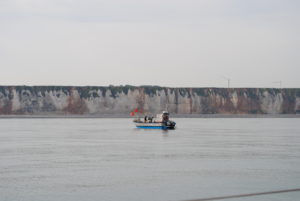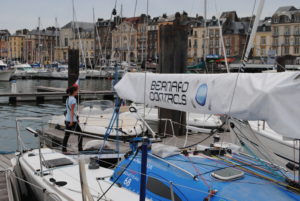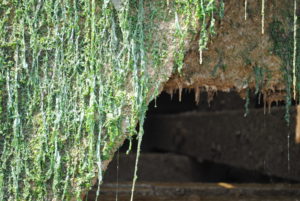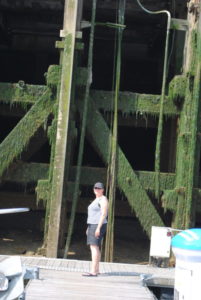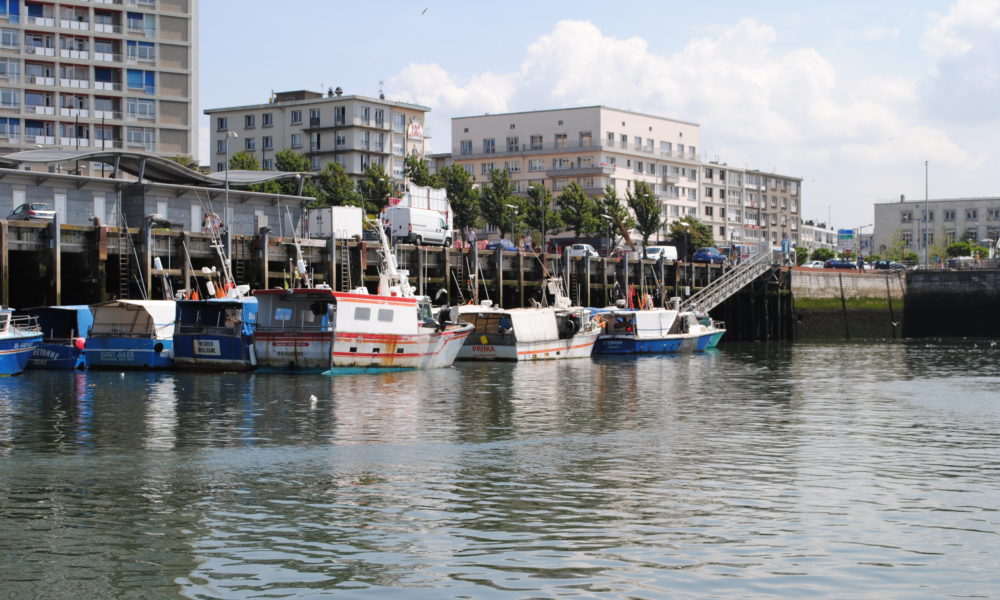
Noise and unrest. Fish stench and gulls. We are in Boulogne-sur-Mer
50° 57′ 4.644” N 1° 51′ 31.2696” E
July 15. – 2013
Damn, we are struggling with the autopilot and the chart plotter. We study the manual for the chart-plotter. We study even more intensely the manual for the autopilot. Manuals are read from front to rear. More boring prose does not exist in the world.
In an ugly cocktail of a sick autopilot and a sudden doubt of our calculations of how the tide will affect on “Ronja”, we decide to shorten the day’s range, and we call the port Boulogne-sur-Mer in stead of the initial target og the day, Dieppe. We fear that the current against us will be to strong, before we can reach Dieppe, and at the same time we would have to steer “Ronja” by hand for many hours.
Only a few days later, we know that the counter current is not that bad. We could have continued.
It is so amazing to enter these tidal ports. The piers are totally oversized. When visiting a port at low tide, you feel like a tiny speck in a vast world. On top of the tall, oversized piers you see small Frenchmen by the dozen fishing.
Boulogne-sur-Mer stinks of fish and echoes of seagulls. The marina is full of Dutch, it has a completely insane difference between low tide and high tide – something like seven meters – and when the first fishermen are getting ready for a new days work a little after midnight, they throw around for some hours with empty fish boxes. Not much room for a good night’s sleep. Hubbub. Fish stench and gulls. A somewhat overestimated stop on the trip.
We have, however, a really good lunch at a brasserie, where local French people flock during their lunch break. Mussels with french fries for Kirsten. Steak tartar, fried egg and friess for Per. Super.
The city is incomprehensible popular among boaters. Unfortunately, we are at the end of a ponton, and in the evening there are more sailors mooring on our side. A Dutchman and a Norwegian. The Norwegian becomes evidently bullied by some vociferous Dutchmen, who believes that his boat are bumping into them, and that he should pull a stern line all the way to the bridge, instead of just being moored to a Dutchman, which in turn is tied to our boat, Ronja. The Norwegian is cool. He is on vacation. He is not inclined to add to the vocal Dutchmen. We go with the Norwegian – for historical reasons – and notify him, that we agree, that the dutch are overreacting heavily.
In Boulogne-sur-Mer, we buy a handheld VHF to be used, when we take the mast down and no longer have the antenna to our regular VHF, and a water hose, because we have been told, that the tradition of the port offering water hoses to guests is not at all widespread in french ports.
Logbog: Sailed distance: 21 miles with one of Kirsten’s calculated ‘nudges’ in the back from the tide. Time: Departure 06.30 from Calais. Arrival 10:30 to Bourlogne-sur-mer. Crew: Kirsten and Per. Weather: Virtually no wind. Sailing for motor.
- The coast between Boulogne-sur-Mer and Dieppe
- The harbour in Boulogne-sur-Mer
- When the tide goes back it leaves interesting sights
- Impressive constructions in tidal harbour
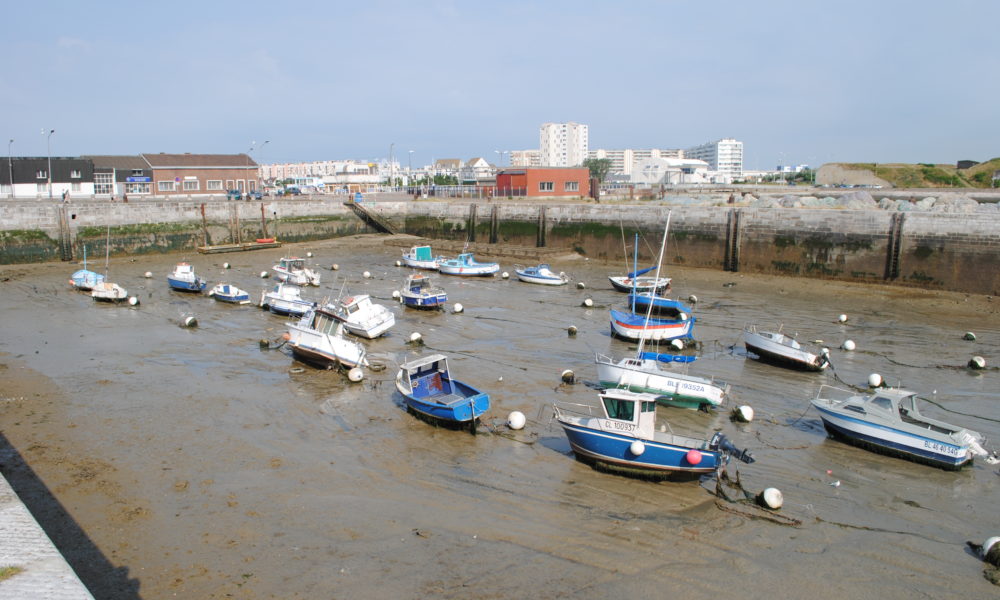
The boats in the neighbouring basin are on the bottom of a dried-up pool! Talk about tides
50° 57′ 4.645” N 1° 51′ 31.2696” E
July 14. – 2013
The sun shines. It will be a wonderful day. Calais is waiting.
After a few hours at the computer, where Per seeks to resolve a domestic problem at the newspaper, we explore the city. The boats in the neighbouring basin are located on the bottom of the dried-up pool! All the water is gone! Talk about tides.
We see the town hall, which was built in the English style. Calais was for many years in British hands. We rediscover the difference between a boulangerie, patisserie and boucherie. We visit a museum about World War II furnished in a huge German bunker built in the city’s most beautiful park. The bunker has 20 exhibition-rooms with pictures, props and newspaper clippings from the war. An old-fashioned museum concept yet thoughtful because of the subject and the horrific images.
Later, we are on the beach, where the French are getting ready to celebrate the fourteenth of July. It is teeming with bathers, with ice cream parlours, beach toys and promenading Frenchmen. It’s all to get in the holiday mood.
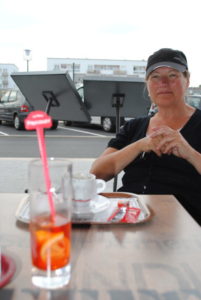
It’s still a little hard with the French. Kirsten’s first order in a cafe was for two coffees – “an espresso and an americano, thank you.” The waiter nods as a sign, that he understands the order and returns with an espresso and a bitter, pink drink called an americano.
During the day we decide to go to sea. We can come in and sail on the canals in time. If we continue along the English Channel and sail up the Seine, there are almost five hundred kilometres to Paris and only six locks. If we go into the channels here from Calais it is 450 km and 36 locks. We choose freedom of the sea. Even if we have to steer by hand all the way if we do not get the chart plotter repaired with its correspondence with the autopilot.
The plan is: Up at 6:30. Out through the port gate for 07:17. And after Kirsten’s increasingly authoritative calculations catch the southbound tidal current at 07:57.
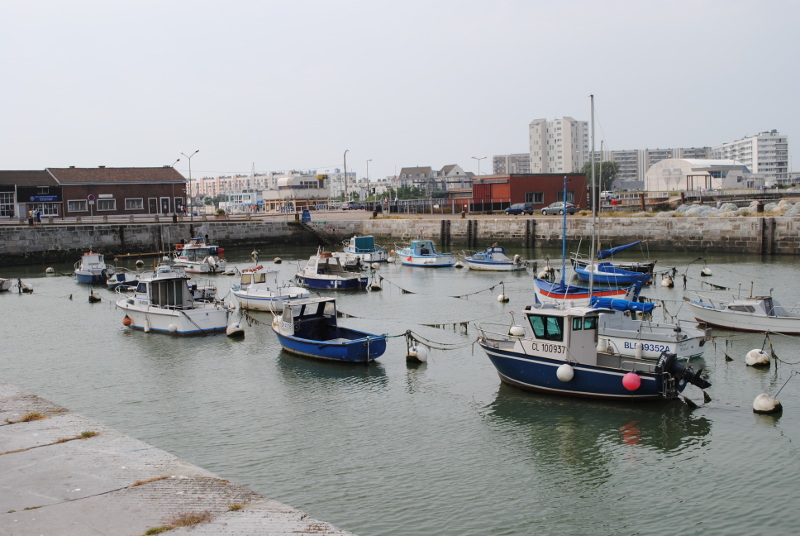
At high tide the boats are in the water. At low tide the same boats are lying at the bottom of the harbour
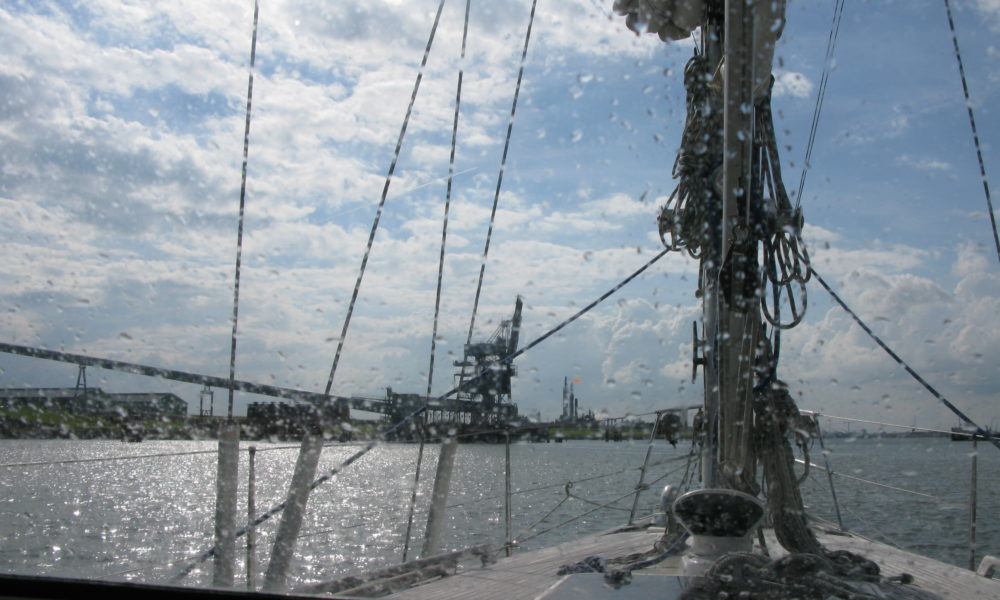
Still we do not understand the tide completely
53° 19′ 48.864” N 6° 55′ 51.1176” E
July 15, 2012
Up at six o’clock. Immediately we start. We follow Jörg’s advice. Beautiful morning. Even with small pieces of blue and glimpses of the sun. But the wind is again contrary, and waves are higher than we know from home.
We are – mildly speaking – uneasy in the sea. We have to pull op the main sail to stabilise the boat’s movements. Per would like to go on deck and hoist the sail, but Kirsten insists that it’s her job. She believes, that the chances are greater, that Per can save her from the water, if she falls, than for her to save Per.
Jörg’s schedule does not hold at all. It takes us six hours to reach Borkum, not four. In addition it takes a few hours to round this island, and we completely misses the tidal push in the Ems river, which should have given us an extra four knots on our way to dutch city Delfzijl.
Ems River is depressingly sad. Huge power plants dominates the entrance. And with no other boats on the water all seems desolate and bleak. Add to this the constantly gray weather.
On a “plaat”, as the Dutch call the surfaces exposed when the tide recedes, we see a seal. Further along the same plaat are a bunch of tourists boarding a ship after having been on a Wadden Sea tour.
Tide is a strange phenomenon. Now we have sailed in it for a week, and we still do not understand it completely, despite practical experience and tons of tidal informations.
But it is no longer quite the mystery, that it was before, we set keel into it for the first time.
Our first observation is, that you can avoid it at a great lenght. If you consciously opt the areas being reclaimed and ensures, that the depth even at low tide is ok, then only remains the question of getting more or less push out of the tide. The one and a half knots with or against, that we have known at home in Danish Svendborgsund may well in these waters be four knobs counter or co-current flow. It can turn into an advantage, and it can turn into a disadvantage.
Our second observation is that certainty about the current status of high tide or low tide can make it possible for you to pass areas where you otherwise would think: “Damn it! Here is not deep enough.” Proper planning gives you opportunities. Jörg gave us a copy of the program “wxtide47” that graphically tells you, where you at a given location are in the tidal cycle.
Our third observation is, that both the Germans and the Dutch have developed amazing engineering skills in creating tidal ports where pontoons rolls up the barrows, telephone pole-like pillars, and you can sleep sweetly, while water moves both two, three, four or more meters up and down below you.
Our fourth observation is more of an assertion: It does not matter if you get stuck on the ground, because if the tide is with you, eventually it will set you free again.
Delfzijl is a pure, unadulterated industrial city. But the city’s marina, Neptunus, is prima. We sleep well after 12 hours in the high waves.
Log-book: Sailed 6.00. Destination: Delfzijl in the Netherlands. Arrival 18:00. Weather: Wind from the west 10 meters per second. Almost contrary to our sailing direction. Big waves. Hammering up and down. Tiring sailing.
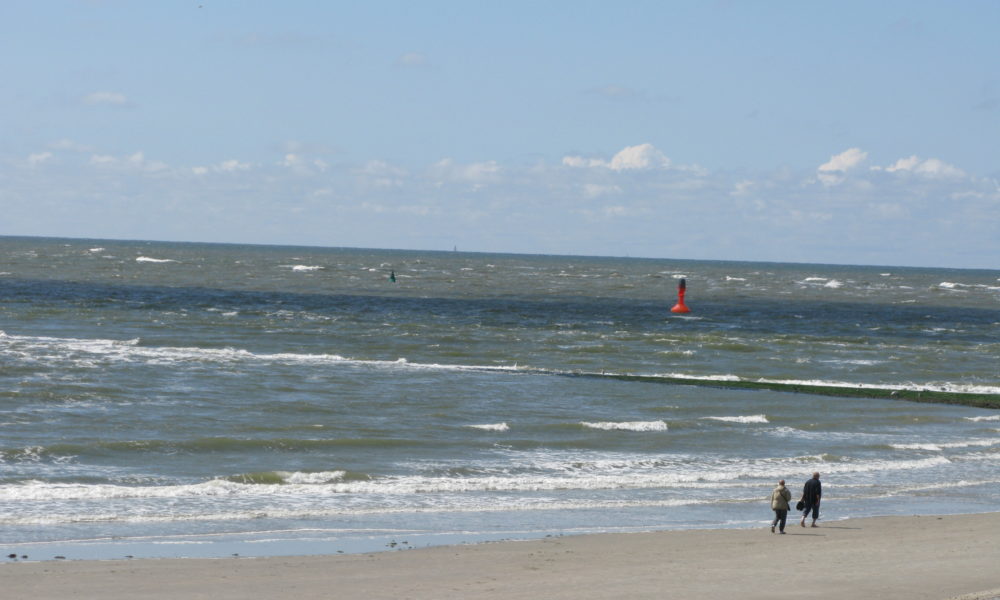
An interesting German spa- and wellness town
53° 42′ 8.3736” N 7° 9′ 56.6208” E
July 14, 2013
We are in Norderney. We are jogging seven kilometers in the town to get a sense of where we’ve arrived.
A spa town. Huge. Almost an industry. Hundreds of hotels and boarding houses, parks, cafes and a waterfront, which is powerful like the North Sea in Denmark. Very neat, very stylish, very beautiful and very subdued. This is apparently how the Germans have cure-vacation.
Back on the boat we do some cleaning. Later we cycle to town to shop. Falling into conversation with the owner of the neighboring boat, Jörg from Cologne, which has his Nauticat 33 lying in Ijselmeer and who knows the tidal waters and the Frisian Islands in and out.
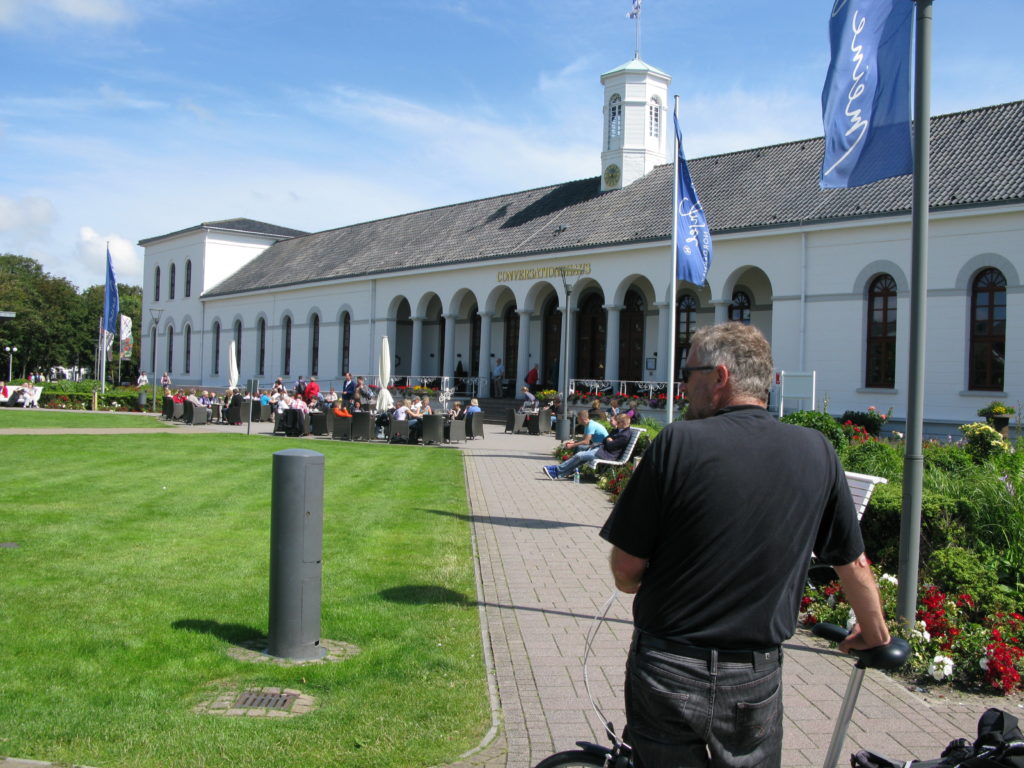
The tips pours out of him. About tides, how to sail in the Wadden Sea, good advice on different cities, and advice on how to put up the boat up for the winter near Amsterdam.
He gives us some charts, a tide application for our computer and an auto map of the entire Netherlands. Good stuff.
“You have to leave at six o’clock in the morning,” he counsels us, looking at the tide-tabels. Damn! We were intending to sleep late tomorrow.
